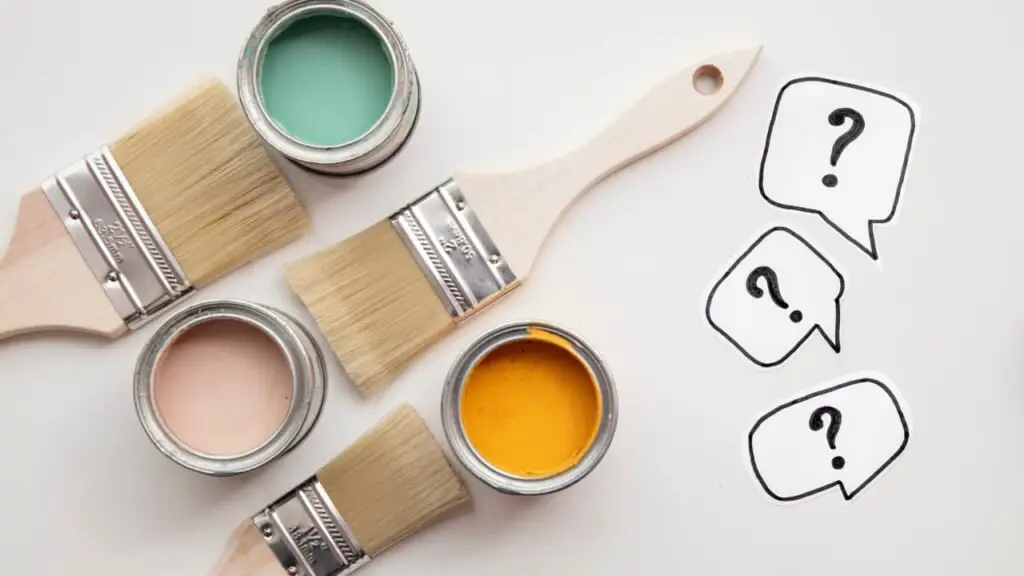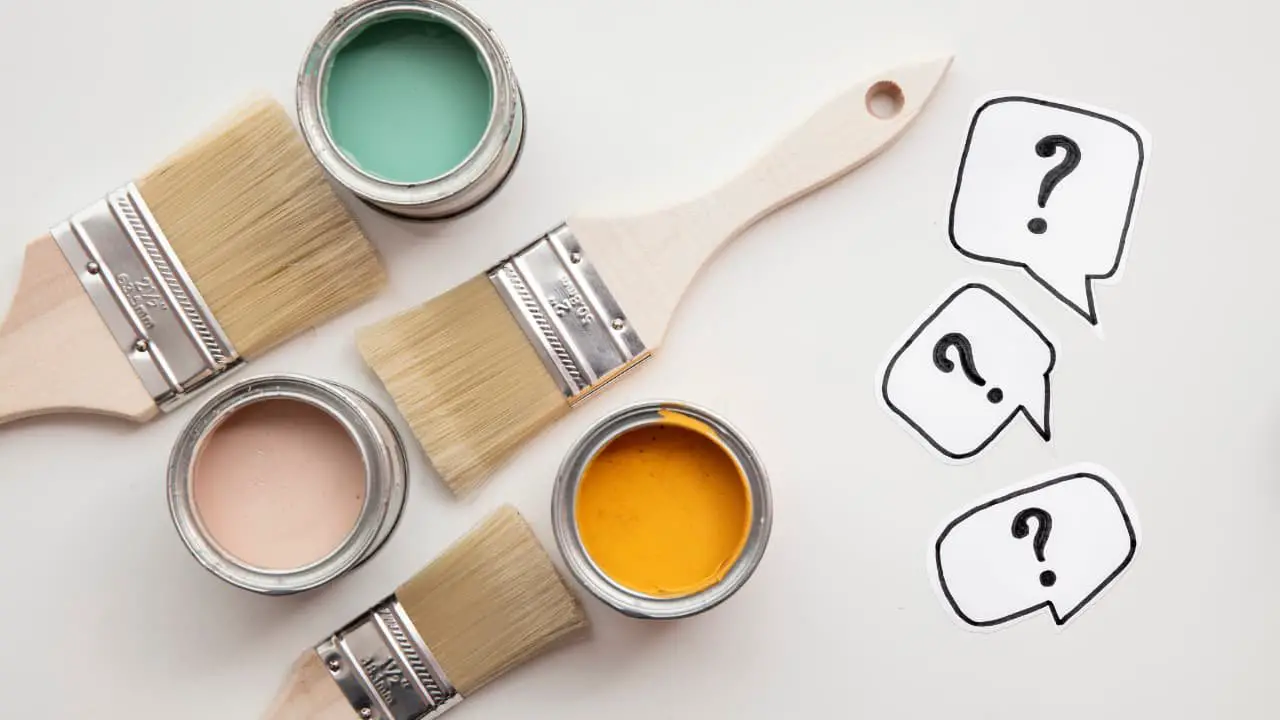Introduction
Are you looking to freshen up your space with a new coat of paint but find yourself constantly battling against unpredictable weather? Can you paint when it rains, or should you wait for clearer skies before tackling that next home improvement project? In this blog post, we’ll explore how rain affects painting projects and share expert tips on how to make the most out of even the dreariest days.
Can You Paint When It Rains? 💭
Yes, you can paint in the rain but precautions must be taken. Rain can be a major concern when it comes to painting, but it doesn’t necessarily mean you have to put your project on hold. While painting in the rain is not ideal, it is possible if you take the proper precautions.
Key Takeaways
- Painting during rainy weather conditions can be challenging due to increased humidity, prolonged drying time, and the risk of washed-off paint.
- To avoid these issues, it’s crucial to check the weather forecast before starting any project, adequately prepare your surfaces for painting, use high-quality materials that resist moisture, and shelter your work area from rain if possible.
- While it’s possible to paint in the rain by taking necessary precautions like using acrylic-based paints and ensuring all areas are sheltered from incoming rainfall while painting continues. However, avoiding painting altogether during rainy or stormy conditions is generally recommended for best results.

Table of Contents
Effects Of Rain On Painting
Rain can have several negative effects on painting, such as delayed drying time, increased humidity, and the risk of washed-off paint.
Delayed Drying Time
One significant challenge faced while painting during rain is the delayed drying time of acrylic paint. This issue arises due to the increased moisture in the air, which can significantly extend the amount of time required for your paint to dry properly.
This prolonged drying period not only affects your workflow but also increases the risk of damage to freshly painted exterior and interior surfaces. For example, imagine you have just finished painting a beautiful mural on an exterior wall; any sudden downpour could cause water droplets to mix with wet paint and ruin your artwork.
Increased Humidity
One of the effects of painting in the rain is increased relative humidity. This means that the amount of moisture in the air is higher than normal, which can lead to issues with drying and absorption for freshly painted surfaces.
With high levels of humidity, paint takes longer to dry, making it difficult to achieve a smooth finish on flat surfaces.
To combat this problem, it’s essential to take precautions when painting during rainy or dry weather conditions. You may want to consider investing in high-quality equipment such as dehumidifiers or specialized paints designed for humid environments if you’re planning an outdoor project during a damp period.
Washed-off Paint
One of the most significant issues with painting in the rain is the possibility of washed-off paint. Rain can quickly wash away freshly painted surfaces, resulting in a waste of time, money, and effort.
Not only that, but it seems wet surfaces could also lead to uneven absorption of the paint on your surface. It’s essential to check the weather forecast before starting any painting project and avoid painting during rainy or stormy conditions.
If you must complete a project during such conditions, consider waiting for a break in rainfall or covering the interior walls of your work area with plastic sheeting or tarps to prevent water damage to your fresh coat of paint.
Tips For Painting In The Rain
Check the weather forecast before starting any painting project in rainy conditions, prepare the surface properly by cleaning and allowing it to dry completely, use high-quality paint and equipment that can resist moisture, and shelter your work area if possible to avoid raindrops falling on freshly painted surfaces.
Check The Weather Forecast
Before you start painting, it’s crucial to check the weather forecast. This will help you determine whether it’s safe to paint or not. If the forecast shows a high chance of rain within 24 hours, hold off on painting as moisture can cause problems for your project.
If you’re planning a large outdoor project such as repainting your home’s exterior, make sure to check weather patterns for at least one week ahead. Sudden downpours could damage fresh paint and ruin all progress made with your hard work.
So be mindful when scheduling and choose days with clear skies so that the newly painted surface dries completely before any potential rainfall occurs.
Proper Surface Preparation
Before painting in the rain, it’s essential to prepare your surfaces adequately. Any dirt, debris, or flaking paint will make your paint job a disaster, so clean and prep the area thoroughly beforehand.
Depending on the surface you’re painting, using a brush or scraper can help remove any peeling paint or old coatings before starting. If you’re using oil paint or working on wood surfaces like decks or siding, make sure they are dry as moisture can cause swelling and warping.
In addition to prepping the surface correctly for applying paint, adhesion and finish quality retention of new paints through harsh weather conditions is equally important. This suggests choosing quality acrylic paints that work against humidity and absorb water while drying slowly enough not to wash off even in rainy conditions.
Use High-Quality Paint And Equipment
Using high-quality paint and equipment is crucial when painting in the rain. Cheaper paints may not hold up well against increased humidity, leading to poor adhesion and peeling.
When using spray equipment, use a sprayer with adjustable pressure control to ensure that the paint is applied evenly and does not run or drip.
Investing in these materials may seem costly at first but will save time, money, and effort in the long run as they produce better results that last longer. To prevent any mishaps during rainy weather conditions, it’s best to avoid cheap materials that can damage your work quality overall.
Shelter The Work Area
One of the best ways to protect your painting project from rain is to shelter the work area. This could mean moving your paint application workspace indoors or setting up a temporary canopy if working outdoors.
If you’re working on an exterior or interior painting job during rainy weather, consider erecting a tarp or other waterproof covering over the work area. This will help prevent water from getting into fresh paint and washing it away before it has had time to dry properly.
And when working indoors, make sure you have adequate ventilation to allow moisture in the air to escape while keeping rainwater out.
Painting in Rainy Weather
Precautions To Take
Before venturing out to paint in the rain, there are some precautions you need to take. First and foremost, make sure your work area is properly sheltered from the rain. This will not only protect your painting surface but also keep you safe from exposure to wet conditions.
Additionally, be mindful of the type of paint and equipment you’re using since certain materials may react differently when exposed to moisture. For example, acrylic paints tend to hold up better than oil-based ones during rainy weather conditions.
Finally, always check for necessary drying time before any expected rainfall or humidity levels that can slow down drying times even further.
Factors To Consider
Before painting in the rain, there are some important factors to consider. First and foremost, it’s essential to make sure that the surface you’re painting on is completely dry before applying any paint.
Another factor to consider is the type of paint being used. Acrylic paints tend to dry faster than oil-based ones, making them a better choice for rainy weather conditions.
Lastly, it’s crucial to pay attention to weather forecasts and plan accordingly. Avoid starting a painting project if rain is expected in the next 24 hours or if temperatures are below recommended levels for proper drying times.
Necessary Conditions
Painting in the rain isn’t always a good idea, but if you must, there are some necessary conditions to consider. First and foremost is the temperature. The ideal temperature for painting ranges from 50-90°F with low humidity levels between 40-70%.
Secondly, it’s important to check weather forecasts and plan accordingly. Avoid painting when rain is expected within the next couple of hours as it can wash off wet paint on freshly painted surfaces.
It’s also essential to ensure that all areas are sheltered from any incoming rain while the painting process continues.
Conclusion
So, can you paint when it rains? Well, the answer is yes, you can. However, it’s not a straightforward process and requires some precautions and preparation.
When considering painting in rainy weather conditions ensure that you’re up to date with the latest weather forecasts.
Using high-quality paints, equipment or protective gear will provide better performance while using suitable techniques like sheltering the work area from rain will make your job easier.
In conclusion, there are ways around painting in rainy weather conditions but only if necessary precautions are taken.

